Input interpretation

o-dichlorobenzene
Chemical names and formulas
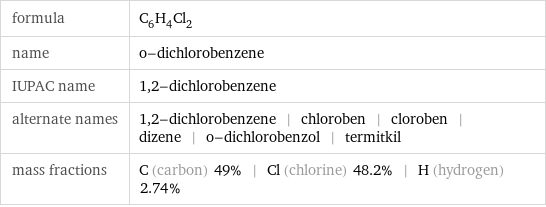
formula | C_6H_4Cl_2 name | o-dichlorobenzene IUPAC name | 1, 2-dichlorobenzene alternate names | 1, 2-dichlorobenzene | chloroben | cloroben | dizene | o-dichlorobenzol | termitkil mass fractions | C (carbon) 49% | Cl (chlorine) 48.2% | H (hydrogen) 2.74%
Lewis structure
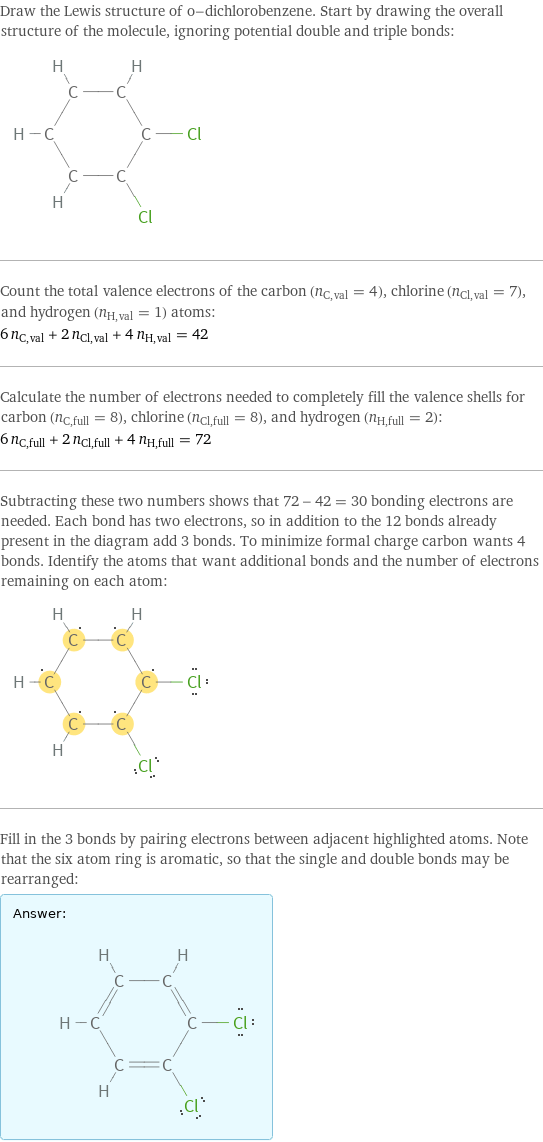
Draw the Lewis structure of o-dichlorobenzene. Start by drawing the overall structure of the molecule, ignoring potential double and triple bonds: Count the total valence electrons of the carbon (n_C, val = 4), chlorine (n_Cl, val = 7), and hydrogen (n_H, val = 1) atoms: 6 n_C, val + 2 n_Cl, val + 4 n_H, val = 42 Calculate the number of electrons needed to completely fill the valence shells for carbon (n_C, full = 8), chlorine (n_Cl, full = 8), and hydrogen (n_H, full = 2): 6 n_C, full + 2 n_Cl, full + 4 n_H, full = 72 Subtracting these two numbers shows that 72 - 42 = 30 bonding electrons are needed. Each bond has two electrons, so in addition to the 12 bonds already present in the diagram add 3 bonds. To minimize formal charge carbon wants 4 bonds. Identify the atoms that want additional bonds and the number of electrons remaining on each atom: Fill in the 3 bonds by pairing electrons between adjacent highlighted atoms. Note that the six atom ring is aromatic, so that the single and double bonds may be rearranged: Answer: | |
3D structure
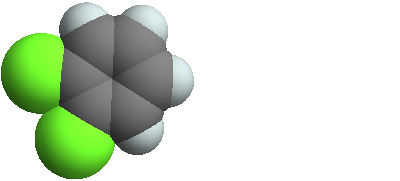
3D structure
Basic properties
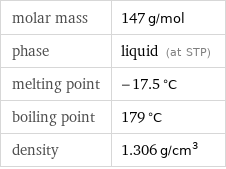
molar mass | 147 g/mol phase | liquid (at STP) melting point | -17.5 °C boiling point | 179 °C density | 1.306 g/cm^3
Units

Liquid properties (at STP)
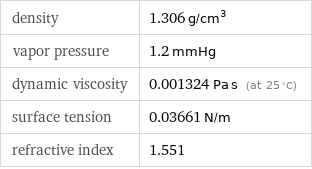
density | 1.306 g/cm^3 vapor pressure | 1.2 mmHg dynamic viscosity | 0.001324 Pa s (at 25 °C) surface tension | 0.03661 N/m refractive index | 1.551
Units

Thermodynamic properties
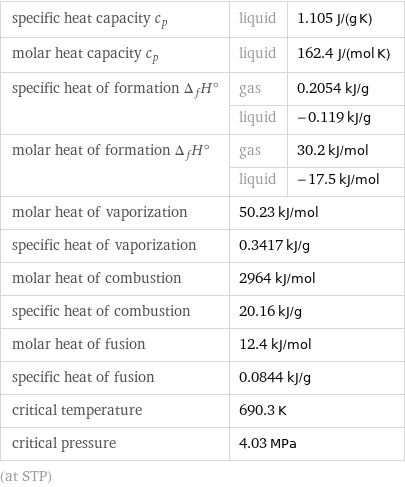
specific heat capacity c_p | liquid | 1.105 J/(g K) molar heat capacity c_p | liquid | 162.4 J/(mol K) specific heat of formation Δ_fH° | gas | 0.2054 kJ/g | liquid | -0.119 kJ/g molar heat of formation Δ_fH° | gas | 30.2 kJ/mol | liquid | -17.5 kJ/mol molar heat of vaporization | 50.23 kJ/mol | specific heat of vaporization | 0.3417 kJ/g | molar heat of combustion | 2964 kJ/mol | specific heat of combustion | 20.16 kJ/g | molar heat of fusion | 12.4 kJ/mol | specific heat of fusion | 0.0844 kJ/g | critical temperature | 690.3 K | critical pressure | 4.03 MPa | (at STP)
Chemical identifiers
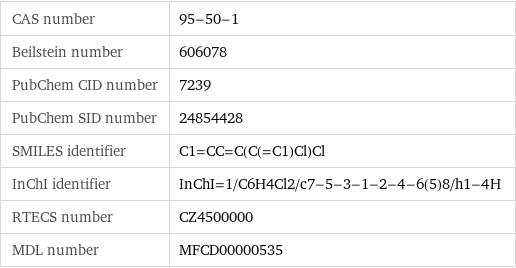
CAS number | 95-50-1 Beilstein number | 606078 PubChem CID number | 7239 PubChem SID number | 24854428 SMILES identifier | C1=CC=C(C(=C1)Cl)Cl InChI identifier | InChI=1/C6H4Cl2/c7-5-3-1-2-4-6(5)8/h1-4H RTECS number | CZ4500000 MDL number | MFCD00000535
NFPA label

NFPA label
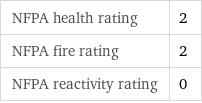
NFPA health rating | 2 NFPA fire rating | 2 NFPA reactivity rating | 0
Safety properties
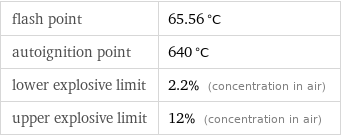
flash point | 65.56 °C autoignition point | 640 °C lower explosive limit | 2.2% (concentration in air) upper explosive limit | 12% (concentration in air)

DOT hazard class | 6.1 DOT numbers | 1591